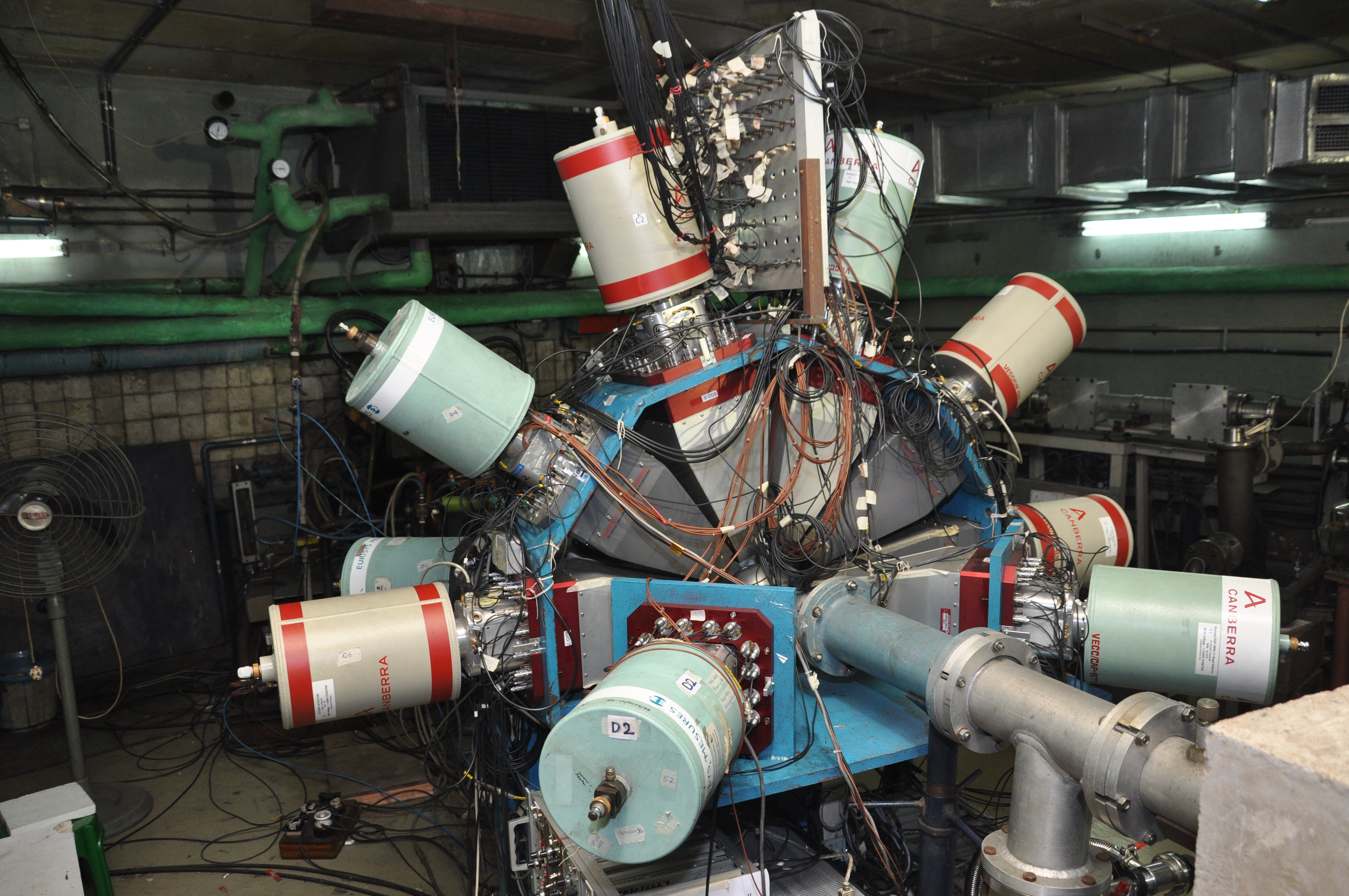
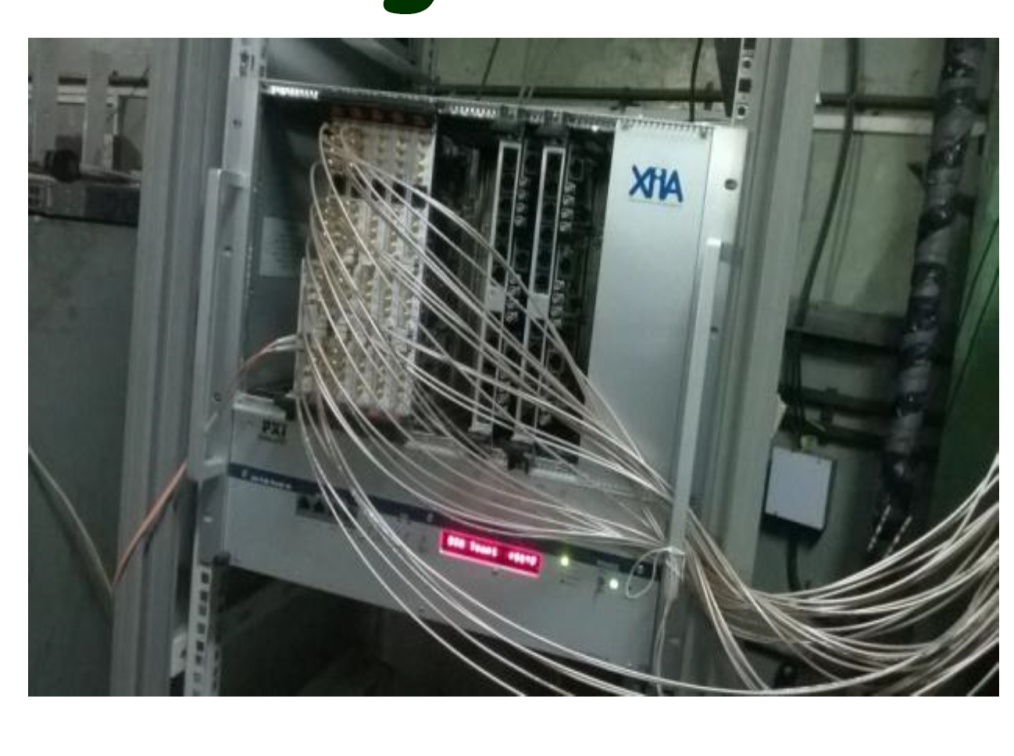
Campaign of the Indian National Gamma Array (INGA) was hosted at the Room Temperature Cyclotron (RTC) of the Variable Energy Cyclotron Centre (VECC), Kolkata
|
During the first phase of the campaign, 15 experiments , led by groups from universities and institutes across the country, were carried out using alpha and proton beams delivered by the RTC in the energy range 28-40 MeV and 7-10 MeV, respectively. The detection setup of INGA consisted of 6-7 Compton suppressed Clover detectors and, after few weeks into the campaign, one LEPS detector for x-ray and low energy gamma ray detections. |
During the Second phase of the campaign, 7 experiments , were carried out using alpha beams delivered by the RTC in the energy range 40-50 MeV. During this phase the design goal of 10 detectors in the support structure was fullfilled and the array comprised of 8 Compton suppressed Clover detectors and, two LEPS detectors. |
|
The pulse processing and data acquisition system (DAQ), contributed by the Kolkata Centre, was based on PIXIE-16 250 MHz 12-bit digitizers, manufactured by XIA LLC, with firmware based on the trigger logic conceived by the Nuclear Physics Group of the Consortium. |
|
|
The INGA setup at VECC supported by the digital pulse processing and data acquisition
system of the Kolkata Centre.
|
|

|

|
|
|
|
|
The digital system is the maiden instance where the operation of such a digitizer based DAQ is a triggered one, contrary to the triggerless methodology usually adopted with similar hardware. It was proposed that the latter approach may befit detection systems using multiple types of detectors with the desired flexibility in the offline implementation of the trigger (validation) condition on the triggerless data. However, for a purely gamma ray detector array, such as INGA, the triggerless acquisition, in its typical form, would imply also acquiring the Compton scattered events, detected by the Anti Compton Shield (ACS). This will lead to a volume of data, much of which are of Compton origin and thus unusable, and a substantial overhead in the data reduction and processing. The system used at VECC implements trigger conditions based on the multiplicity of Compton suppressed detectors, similar to that practiced in the analog processing, and acquires data sets that are almost entirely useful for spectroscopic analysis. |
|
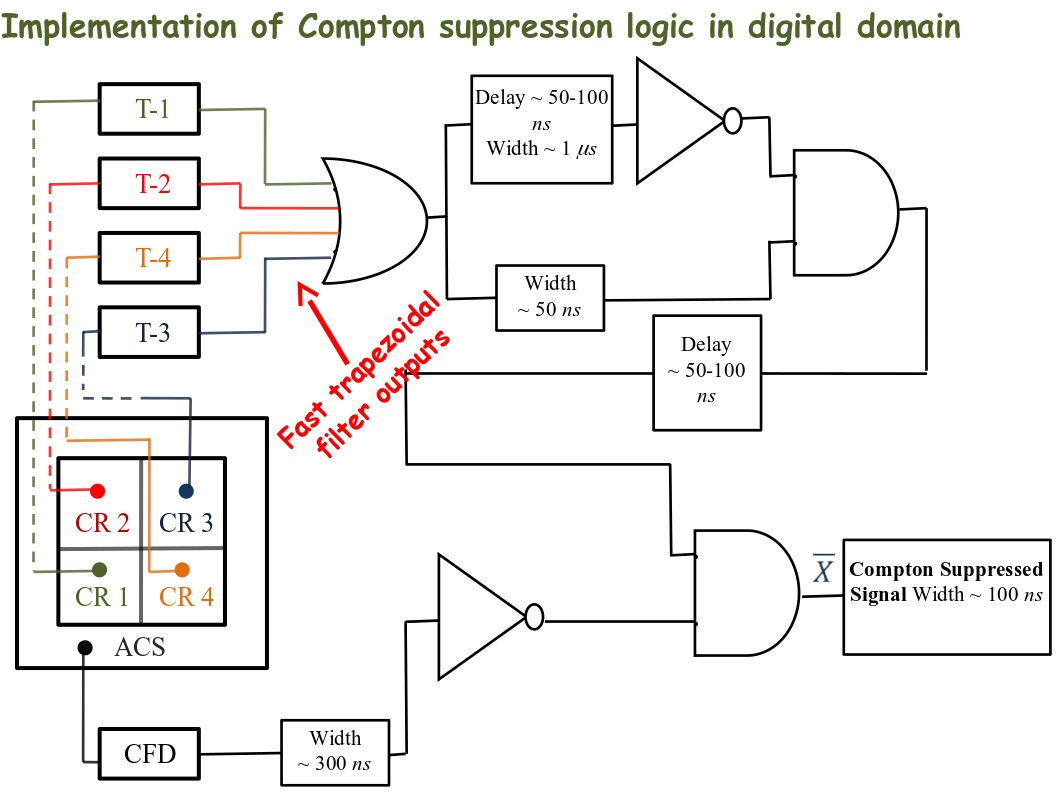
|
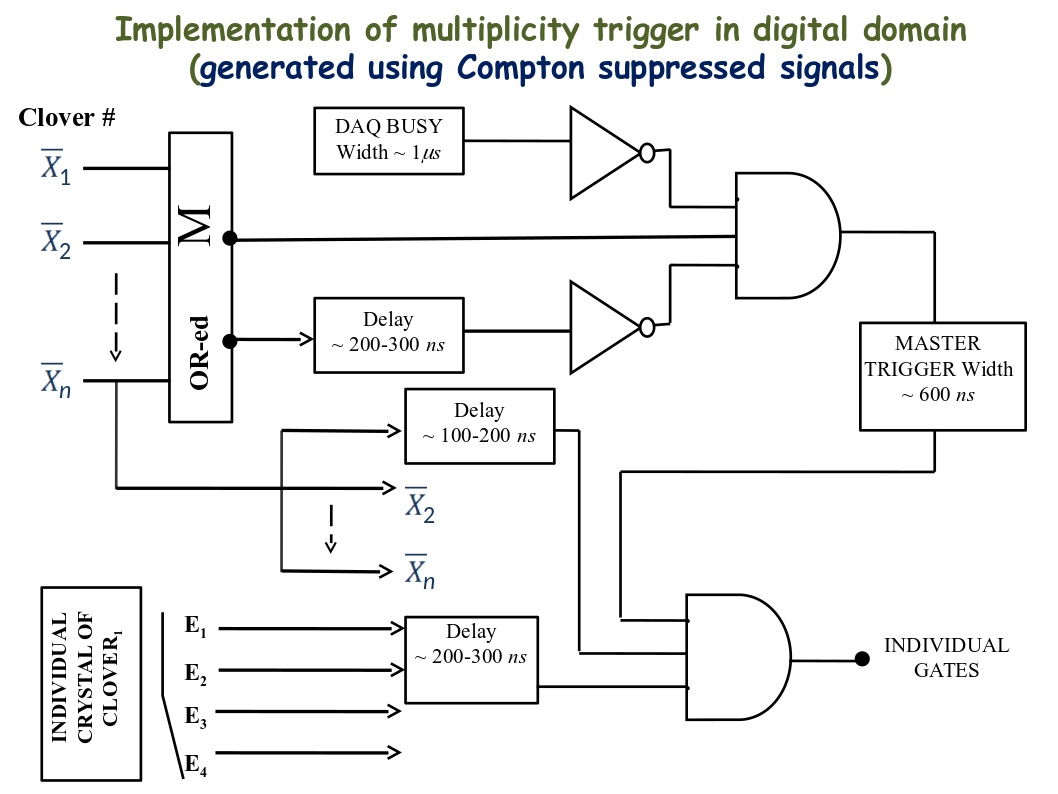
|
|
Block diagram for the Compton Suppression and the Generation of Master Gate |
|
|
Representative Results |
|
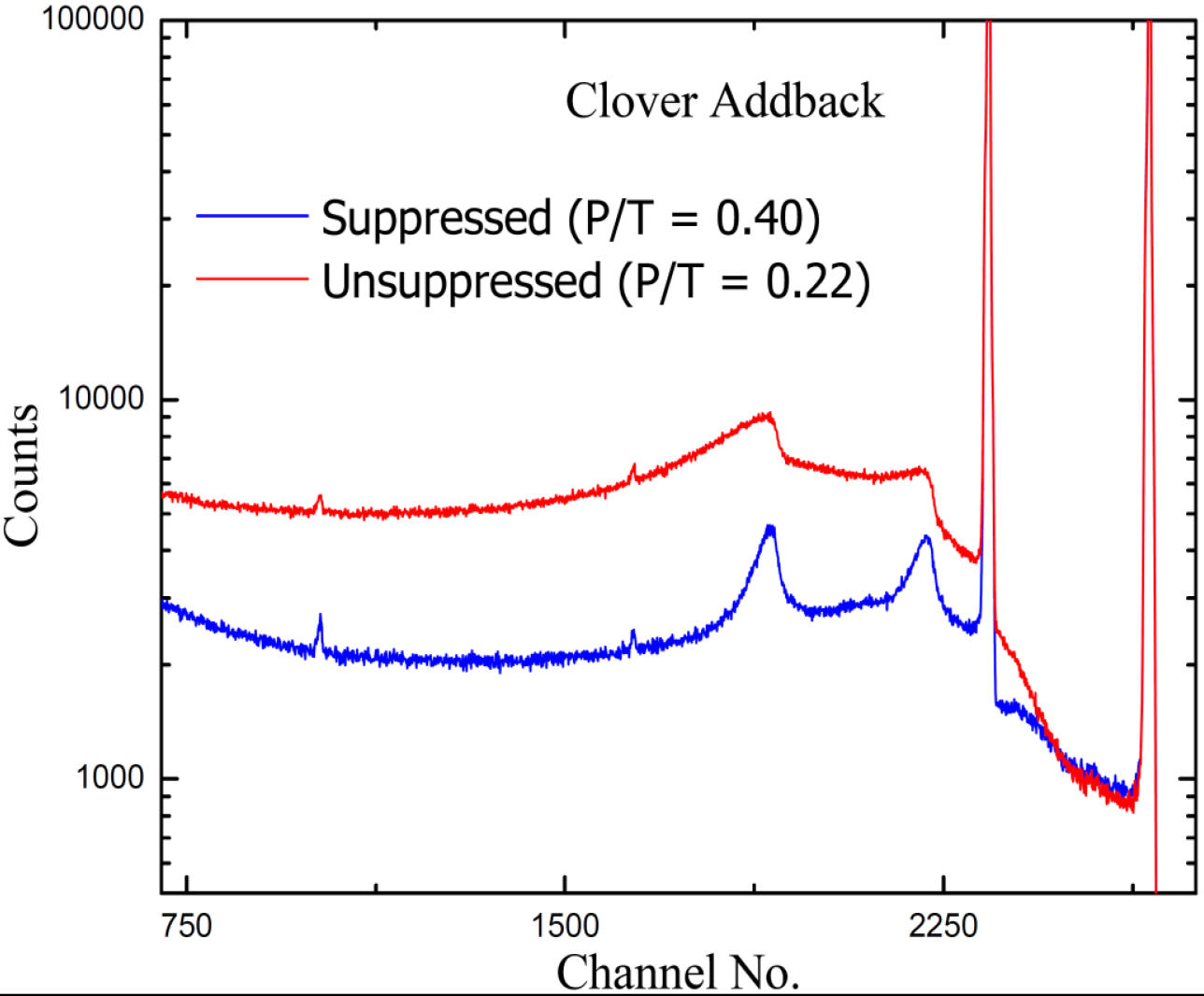
|
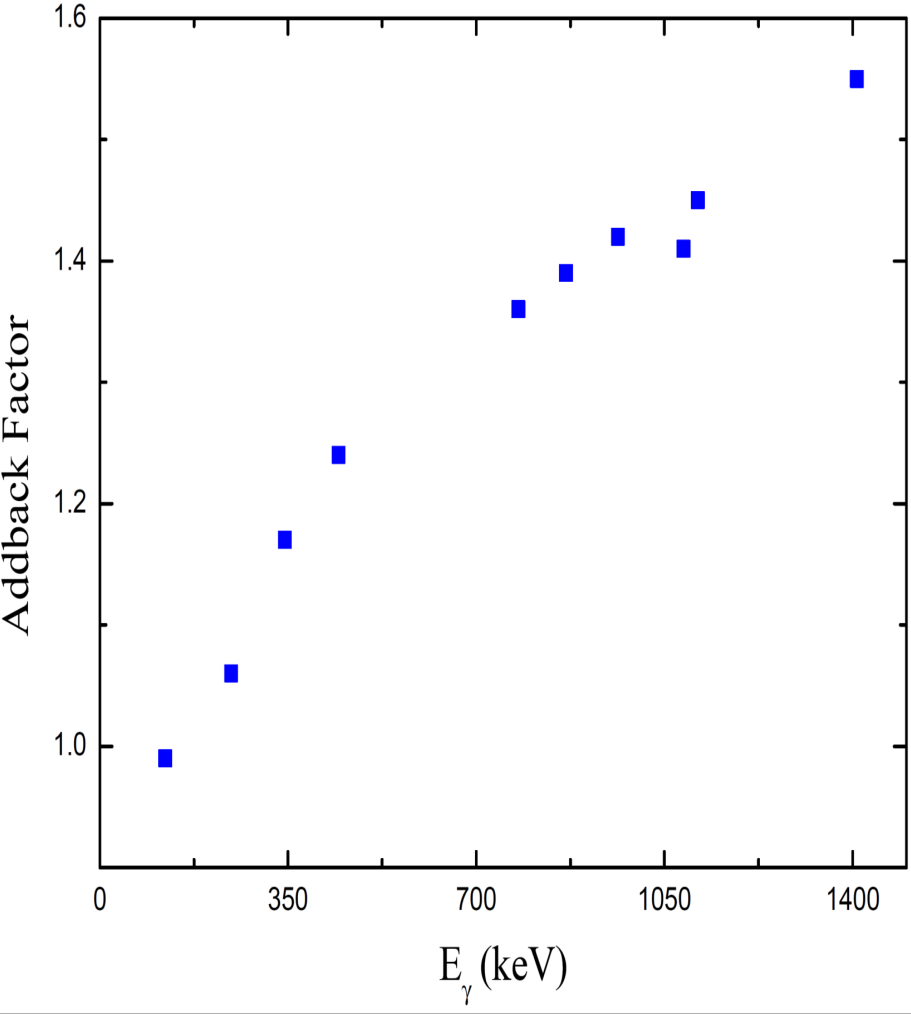
|
|
Apart from the hardware, the Nuclear Physics Group at the Kolkata Centre has also developed a set of programs, under the name IUCPIX, for check and reduction of data acquired with the digitizer system. These programs simplify the data format to economize disk space, perfect the time sequencing in the acquired data in one module, time sequence the data from different modules and finally execute the standard procedures of sorting gamma-gamma coincidence data. |
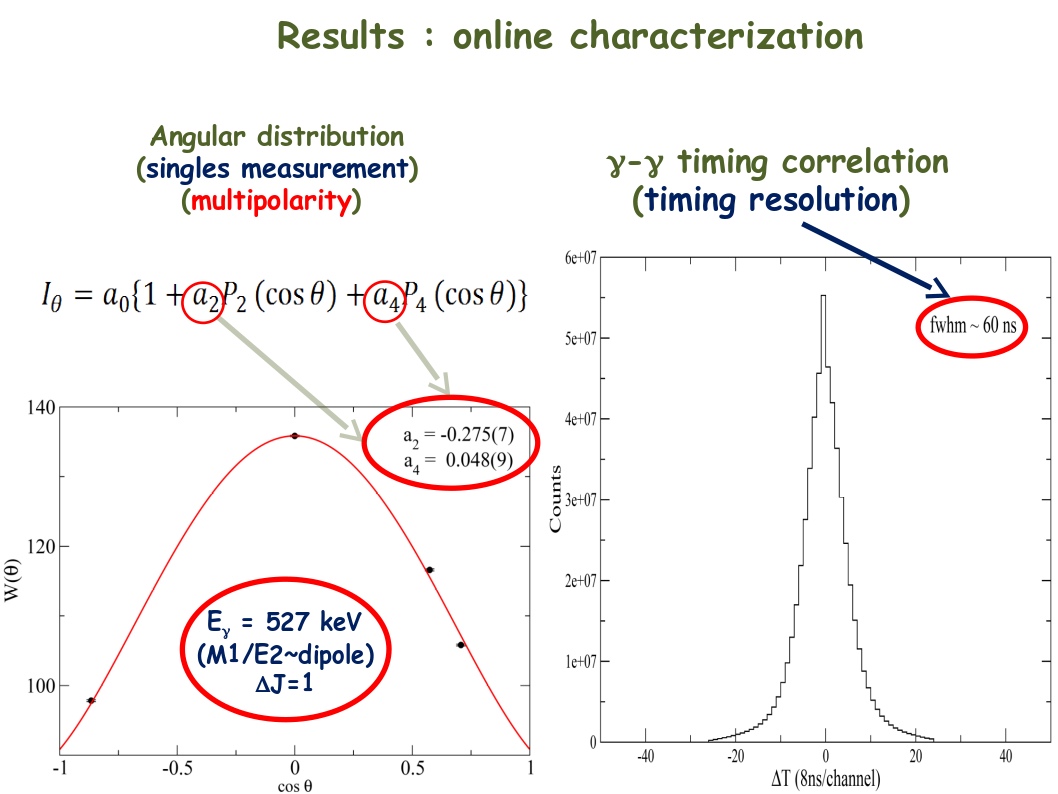
|